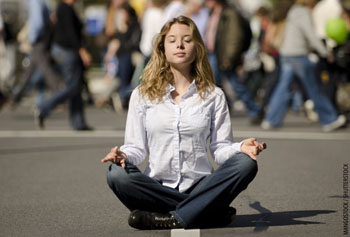
Chapter 1. Stress Management: The Relaxation Response
Introduction


Stress Management: The Relaxation Response
Author: Richard O. Straub
Click the right arrow to start this activity
Video

In this captivating video clip, cardiologist Herbert Benson leads actor Alan Alda through the “relaxation response,” a simple technique of sitting in a comfortable position, with closed eyes and relaxed muscles, while slowly breathing and repeating a focus word such as “calm.” Within minutes, Alda’s muscle tension decreases dramatically, illustrating how the mind can produce stress-reducing benefits. Benson’s research studies have focused on the remarkable feats of Tibetan monks as they practice Tummo yoga, including raising the temperature of their extremities by as much as 15 degrees. Benson explains that meditation counteracts the vasoconstriction triggered by the stress hormones of the fight-or-flight response, opening capillaries and increasing blood flow.
Check Your Understanding
1.
1. Stressful situations trigger:
2. In response to stress hormones:
3. For centuries, Tibetan Buddhist monks have practiced a form of meditation as
part of:
4. The relaxation response associated with meditation is most likely to:
5. Tibetan monks are able to raise the temperature of their extremities because
meditation has the effect of:
Activity results are being submitted...